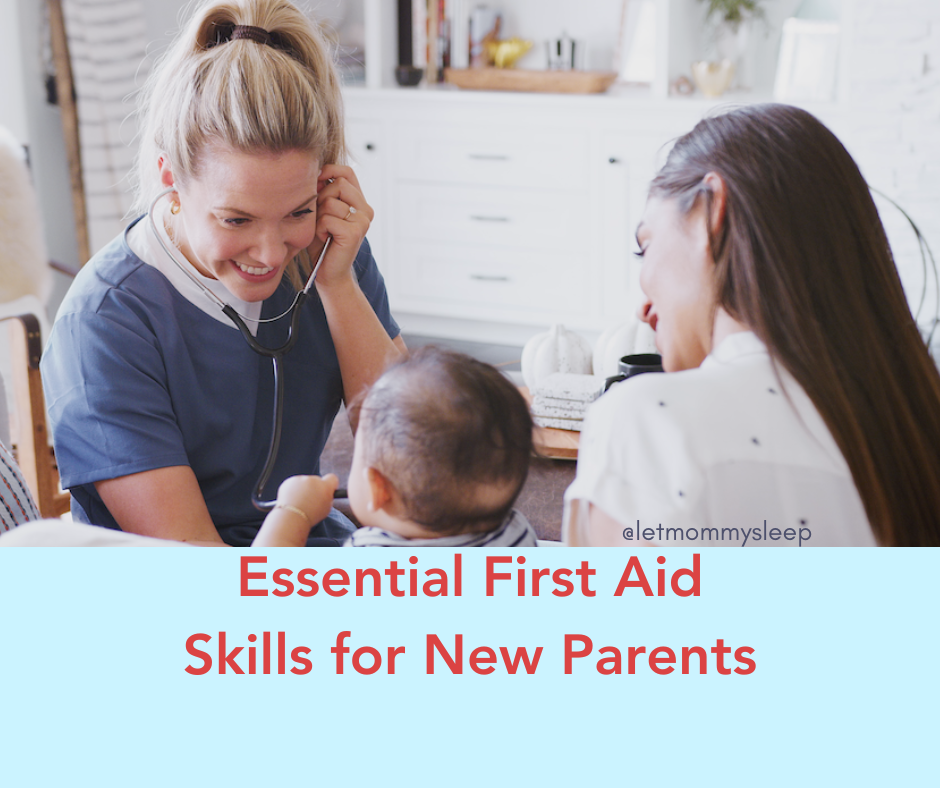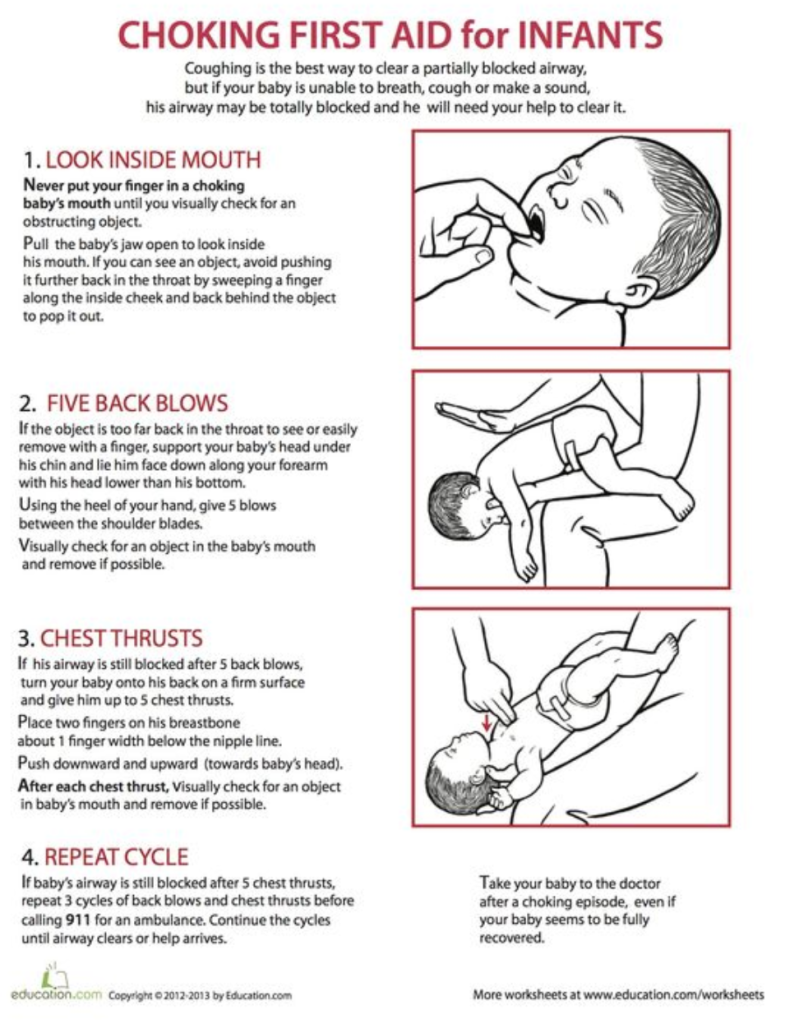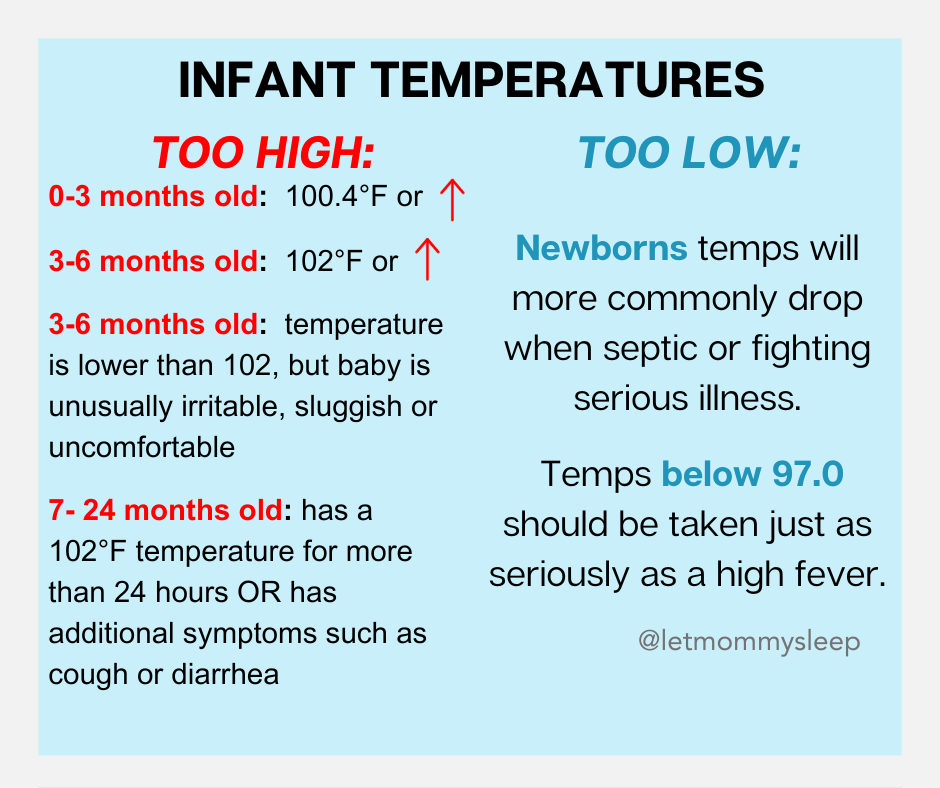Essential First Aid Skills for New Parents
There are so many unknowns to parents of newborns and infants! Being prepared in case of an accident or other emergency will not only help your baby, but also help you. Having the skills to help your newborn, twins or any infant in distress will not only give them the best chance of healing, but allow you to stay calm. Essential First Aid Skills for New Parents are detailed below.

Essential First Aid Skills for New Parents
Know How to Treat a Burn:
Burns are unfortunately a common childhood injury. Depending on the severity of the burn, they are categorized as first, second, or third-degree burns.
- First Degree Burns: use cool water (not ice) to treat first degree burns and apply aloe cream to the area. Do not apply any other ointments or home remedies. The Mayo Clinic suggests, keeping the area clean with a sterile gauze pad for 24 hours. Take care not to use adhesive bandages on young children since they can be choking hazards.
- Second and Third Degree Burns (more severe): Seek medical assistance immediately and try to elevate the burned area. While waiting for help, remove baby’s clothes, apply cool water for five minutes and then cover the area with a clean dry cloth. If the burn is chemical in nature, rinse the burn persistently before taking off his/her clothes. Then remove clothing from the burned area and continue flushing the burn.
Be able to stop excessive bleeding:
In many cases, the best way to stop bleeding is to use clean gauze and apply firm pressure. If a cut won’t stop bleeding after 5-10 minutes of applied pressure, or the cut is very wide or deep, it’s time to seek professional help by visiting an ER. Continue to apply pressure to the area while in transit to the ER.
It is okay to give your older baby an age-appropriate dose of acetaminophen (Tylenol) for the pain, but never give ibuprofen (Motrin,) which can sometimes increase bleeding. For very severe bleeding cases where blood is spurting out (arterial bleeding,) call 911 right away. While waiting for help, continue to apply pressure and elevate baby’s legs to increase the flow of blood to the heart and brain.
Essential First Aid Skills for New Parents – Save a Choking Baby:
If an object gets lodged in baby’s airway, all parents should know what to do. Please note, if baby has a strong cry or is coughing hard, do not perform this procedure. Strong cries and coughs can often push the object out without any additional intervention. But, if your baby is not coughing or crying, follow these steps, as outlined by the American Heart Association:
- Place baby face down on your forearm, using your thigh or lap for support. Hold the infant’s chest in your hand and jaw with your fingers. Point baby’s head downward so it is lower than the body.
- With the palm of your free hand, give up to 5 quick slaps between the infant’s shoulder blades.
- Turn the baby on his/her back and use two fingers to give up to 5 chest thrusts if the object does not come out.
- Continue the cycle of back blows and chests thrusts until the object becomes dislodges.
- If the infant loses alertness, give CPR, shout for help and call 911.
- Remove the object from baby’s mouth if at any point the object becomes dislodged and can be seen.

Essential First Aid Skills for New Parents – Poisoning
Part of babyproofing your home and the homes of others looking after baby means keeping harmful substances out of reach. If baby ingests something poisonous, or even if you just suspect they may have been exposed, call Poison Control or 911 immediately.
Put Poison Control in your phone contacts 1-800-222-1222. Contacting Poison Control is free and confidential.
It may be tempting to induce vomiting if your baby has ingested something harmful. But inducing vomiting in a baby should never be done without the explicit guidance of a healthcare professional.
In the past, parents were counseled to induce vomiting in a child that ingested something harmful using Ipecac syrup. This is no longer recommended. We learned that Ipecac syrup caused side effects such as prolonged vomiting, diarrhea, dehydration, and damage to the gastrointestinal tract.
Identify & Treat a Fever:
If your newborn or infant has a fever, it’s important to monitor their temperature. For babies making eye contact and responding to you, drinking fluids and/or playing, there’s probably no cause for alarm. However there are times when it’s vital to call the doctor.
Call your child’s primary care physician if:
- Your newborn up to 3 months old has a rectal temperature of 100.4°F (38°C) or higher.
- Your infant age 3 – 6 months old, has a temperature of 102°F (39°C) or higher
- Infant age 3-6 months has a lower temperature but is acting unusually irritable, sluggish or uncomfortable
- Baby age 7- 24 months has a 102°F temperature for longer than 24 hours or has additional symptoms such as cough, or diarrhea
In addition to fevers, Registered Nurse and Newborn Care Provider Liz reminds us: “Newborns temperatures will more commonly drop when septic or fighting serious illness, temps below 97.0 should be taken just as seriously as a high fever.” A doctor or 911 should be called.

As always, if you feel something just isn’t right with your baby, call the pediatrician or even visit the ER.
In an emergency, if your baby is unresponsive and not breathing normally, call 911 and begin CPR. Below are general CPR instructions but these do not take the place of learning proper CPR. Parents and caregivers should take a class and get certified.
- Place baby on a firm, flat surface
- give 30 chest compressions using two fingers in the center of the chest.
- Follow it with two rescue breaths, covering the baby’s mouth and nose with your mouth while maintaining a tight seal.
The above is not a substitute for actual CPR training. Attending a class is the only way to understand proper technique and practice skills.
Categories
- Baby Care Classes
- Baby Care How-To's
- Baby Sleep
- Family Activities with Baby
- Feeding
- Franchise & Company Info
- Hiring Help
- Our Favorites
- Postpartum Health
- Safety & First Aide
- Twins & Multiples
- zArchives
